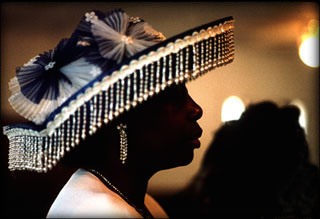|
|
|
|
|
|
|
|
 |
|
The glitz of the "New South" with its high-rise downtown business centre overshadows the fact that Atlanta is America's second poorest core city with a homeless population of over 20,000 and a 300% increase in crime. Atlanta is a divided city: the poor and mainly black population live in the south (the Olympic stadium was built in the middle of a low income community with crack houses less than 200 metres away); the rich, mainly white, live in wonderful leafy suburbs in the north such as the appropriately named Buckhead. Some roads even change names as they run from north to south just to make sure people know where they come from. Atlanta, home of Martin Luther King (his daughter still teaches in Atlanta), has had a black mayor since 1973 and has a racial tolerance which gives hope for the future, as expressed in the words of Congressman John Lewis, son of an Alabama sharecropper: "The greatest sense of hope when it comes to race relations is in the South in spite of the past and the problems we still have". These problems are endemic in poor urban areas of America, especially drugs violence. At Grady Hospital in Atlanta, round the corner from King's Baptist church, 20% of the babies are born addicted to crack and many of them have the AIDS virus. The uneasy racial harmony breaks down in the surrounding countryside: in counties such as Forsyth, the Klan is still real and Blacks are unwelcome. This is unofficial, of course, but cross burnings and openly racist signs deter any newcomers. The state flag, which is the same as the old Confederate flag, is much in evidence and is hated by the black community. In the north I felt I was being watched as a potential intruder simply through walking around with my cameras (no one else was walking in those baking streets and each passing police car slowed just enough to make me feel uncomfortable and unwelcome) while in the south I felt conspicuous and vulnerable in my whiteness and wealth of equipment. The tale of two cities, became increasingly real to me. Black and white people may work together here but they do not live together. The problem for me as a white outsider trying to work in two disparate societies for short periods of time was never fully resolved. The surreal nature of my position was underlined when having spent the day working with an evangelical group of ex cons. and addicts in a project, I joined two white policemen on night patrol downtown. Imagine my confusion (and the-irs!) when one of the first calls was a "disturbance" in a black neighbourhood which turned out to be a "turn to God" rap and dance in the street organised by my friends from earlier in the day. Photo-essays would be impossible to produce without the trust and unselfish help of a strangers. It always amazes me that whenever I'm feeling, "why am I here?", pissed off, and outside the story, someone, a sort of guardian angel, comes by helping with a suggestion that has me bouncing off in unexpected directions. Barry Lewis
|
|
|
|
|
|
|
|